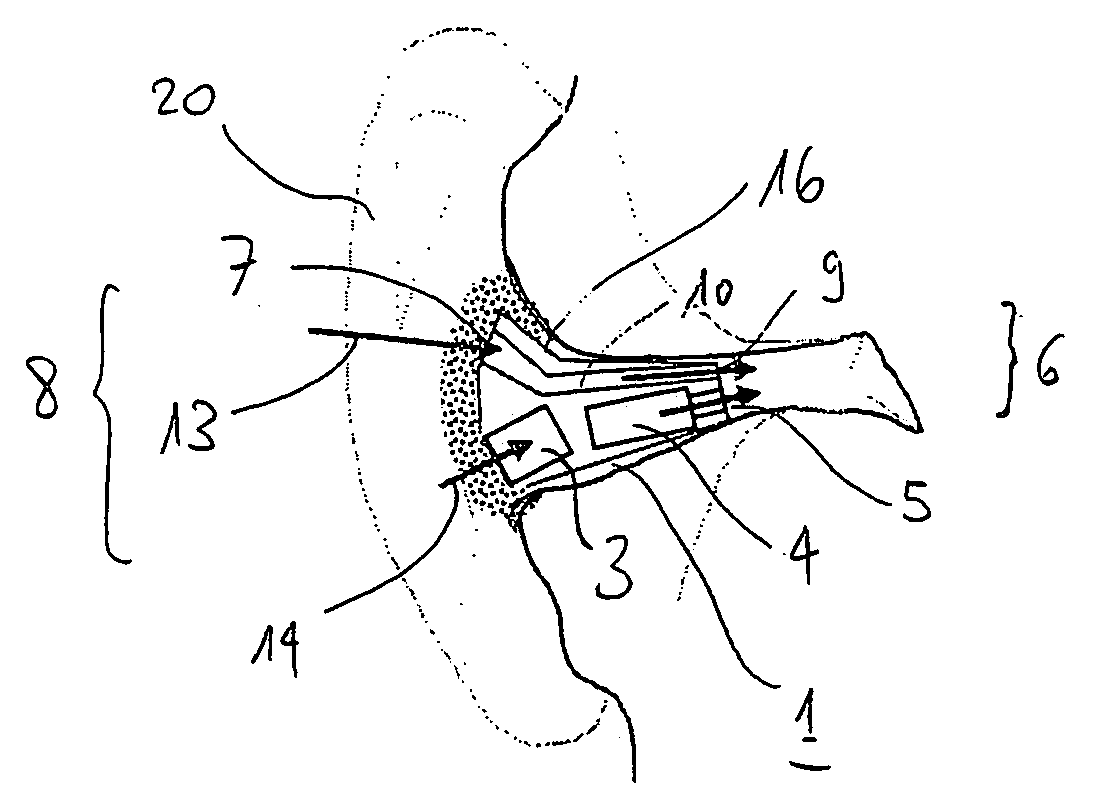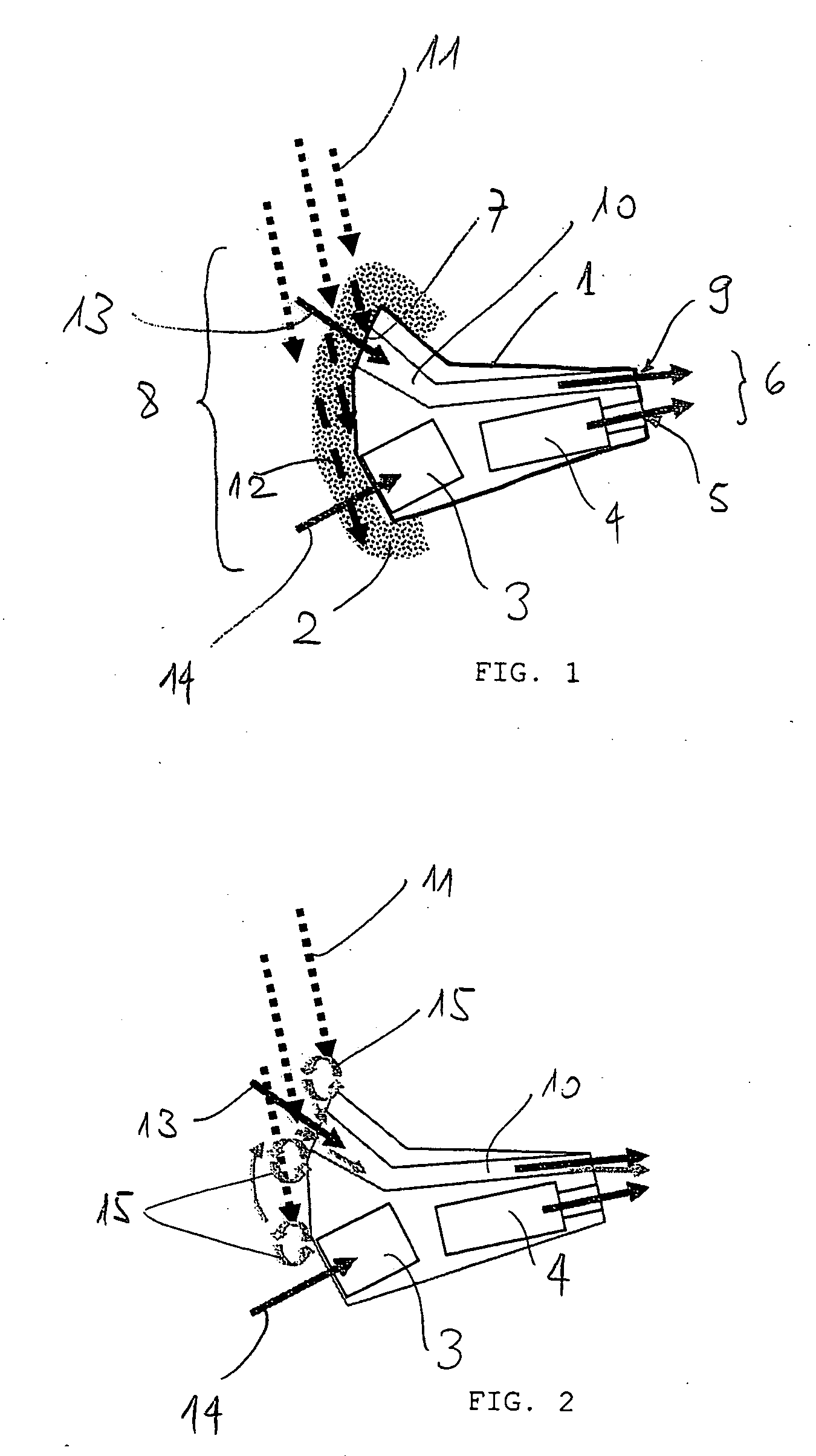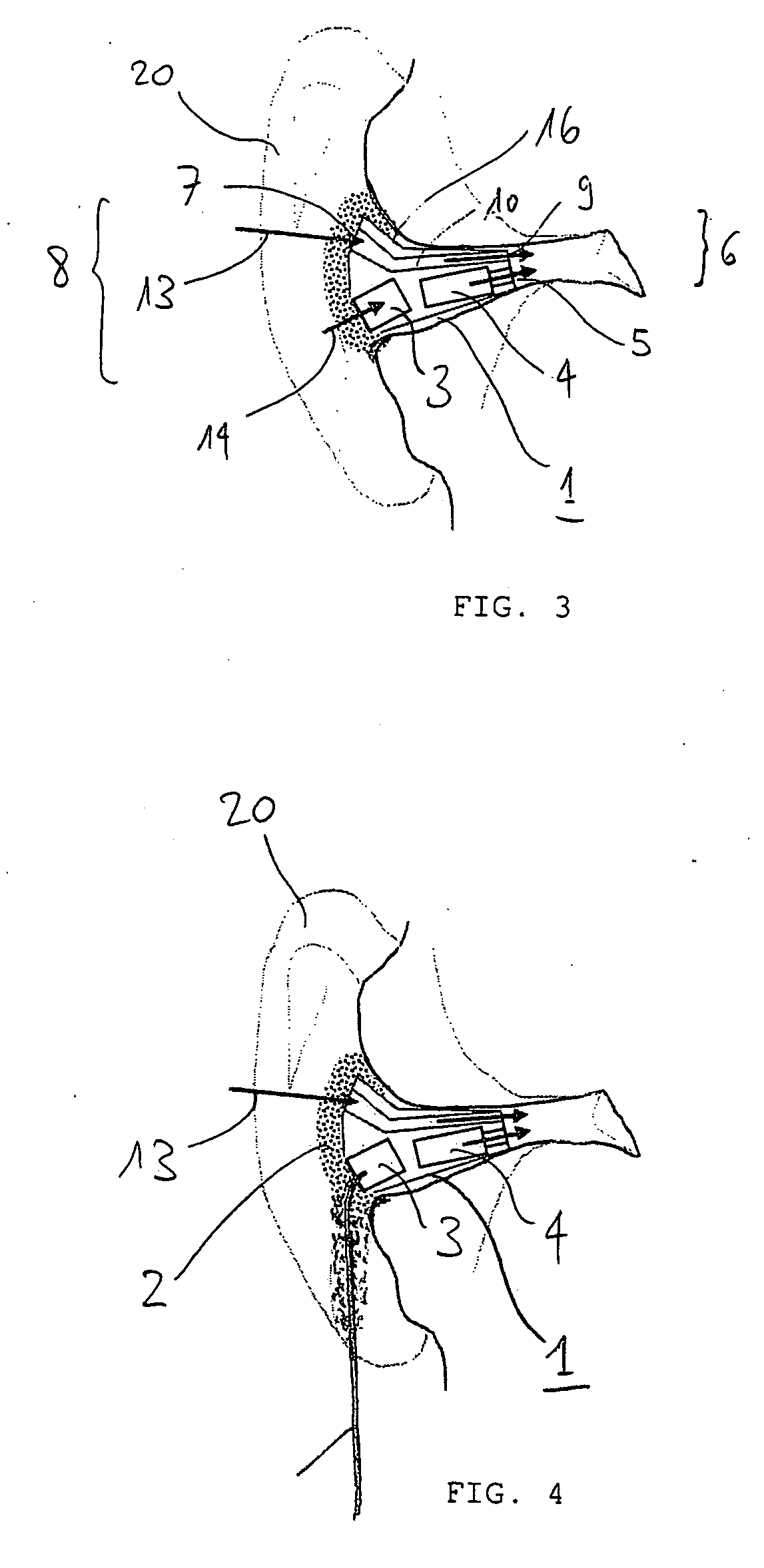In-ear device
a technology of in-ear devices and earphones, which is applied in the direction of transducer types, variable resistance transducers, electrical appliances, etc., can solve the problems of wind noise from the pinna itself, wind noise from the pinna, and hearing devices that are inserted into the ear of users often pick up wind noise,
- Summary
- Abstract
- Description
- Claims
- Application Information
AI Technical Summary
Benefits of technology
Problems solved by technology
Method used
Image
Examples
Embodiment Construction
[0042] In FIG. 1 an in-ear device is depicted comprising a housing 1 and a cover element 2 according to the present invention. The housing 1 has a lateral end 8 which is defined by being a part of the housing 1 which is directed towards surroundings if the housing 1 is inserted into the ear of a user. Furthermore, the housing 1 has a medial end 6 which is defined by being a part of the housing 1 which is directed towards the inner ear of the user if the housing 1 is inserted into the ear of the user. In between the lateral end 8 and the medial end 6, a housing section 16 is provided to complete the housing 1, the housing section 16 being individualized in that its shape is adapted to the topology of the user's ear in order to obtain an optimized user comfort and a maximized holding.
[0043] The housing 1 comprises components or elements which are schematically depicted in FIG. 1. First, a converter 4 is provided in close proximity of the medial end 6, an output port of the converter ...
PUM
 Login to View More
Login to View More Abstract
Description
Claims
Application Information
 Login to View More
Login to View More - R&D
- Intellectual Property
- Life Sciences
- Materials
- Tech Scout
- Unparalleled Data Quality
- Higher Quality Content
- 60% Fewer Hallucinations
Browse by: Latest US Patents, China's latest patents, Technical Efficacy Thesaurus, Application Domain, Technology Topic, Popular Technical Reports.
© 2025 PatSnap. All rights reserved.Legal|Privacy policy|Modern Slavery Act Transparency Statement|Sitemap|About US| Contact US: help@patsnap.com



